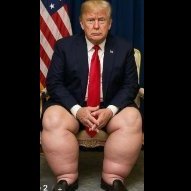Ross: GSP suspension not a big deal
-
Recently Browsing 0 members
- No registered users viewing this page.
-
Topics
-
-
Popular Contributors
-
-
Latest posts...
-
14
THAILAND LIVE Thailand Live Monday 28 July 2025
CIB Arrests Man in Violent Robbery Case Under Rama VII Bridge Picture courtesy of CIB Officers from The Central Investigation Bureau (CIB) have arrested 18-year-old Thanakorn, known by the alias “Tee Bang Kruai”, on 26 July, in connection with a violent armed robbery that left a victim seriously injured beneath the Rama VII Bridge. Full story:https://aseannow.com/topic/1368017-cib-arrests-man-in-violent-robbery-case-under-rama-vii-bridge/ -
0
Crime CIB Arrests Man in Violent Robbery Case Under Rama VII Bridge
Picture courtesy of CIB Officers from The Central Investigation Bureau (CIB) have arrested 18-year-old Thanakorn, known by the alias “Tee Bang Kruai”, on 26 July, in connection with a violent armed robbery that left a victim seriously injured beneath the Rama VII Bridge. The arrest was ordered by Pol. Lt. Gen. Jiraphop Bhuridej, Commissioner of the CIB, and carried out under the command of Pol. Maj. Gen. Wittaya Sriprasertphap, Commander of the Crime Suppression Division, along with a coordinated team of senior officers. Tee was apprehended on a public road in Soi Rattanathibet, Nonthaburi Province, under a warrant issued by the Central Juvenile and Family Court (No. จ.24/2568 dated 2 April 2025). He faces charges of armed robbery causing grievous bodily harm, using a vehicle to commit the offence or to flee the scene, and carrying a knife in public without valid reason. The arrest stems from a brutal incident on 13 November 2024 at approximately 04:30, when a group of three assailants attacked a man under the Rama VII Bridge as he used his mobile phone. One attacker slashed the victim’s left arm with a knife before fleeing with his belongings. The case was reported to Prachachuen Police Station, which initiated an investigation using CCTV footage. A crucial lead came while the victim was hospitalised at Phra Nang Klao Hospital. In conversation, a fellow patient revealed a similar attack in the same area by a group of youths matching the same description. This prompted investigators to coordinate with Bang Kruai Police Station. On 20 November 2024, investigators identified a suspect matching the description and found several items worn by the individual that matched those reported stolen. A search of his residence uncovered additional incriminating evidence. The suspect admitted involvement and implicated others still at large. Following this, an arrest warrant was issued for Thanakorn, who had gone into hiding in Nonthaburi. The CIB team traced his location and successfully apprehended him. A background check revealed an extensive criminal record. At age 15, Tee had been involved in an attempted murder case in the Bang Phlat area. The following year, he was arrested for illegal possession of a firearm in Bang Kruai. At 17, he committed a robbery in Prachachuen, the same district as the current case. Following his arrest, Tee confessed to all charges. He was handed over to Prachachuen Police Station for formal legal proceedings. Authorities continue to pursue the remaining suspects involved in the attack. Adapted by Asean Now from CIB 2025-07-28 -
14
THAILAND LIVE Thailand Live Monday 28 July 2025
Woman Found Dead in Nonthaburi Rented Room After Suspected Suicide Picture courtesy of Naewna A 45-year-old woman was found dead by apparent suicide in a rented room in Bang Yai District, Nonthaburi, in the early hours of 27 July, following an argument with her younger boyfriend. Full story:https://aseannow.com/topic/1368016-woman-found-dead-in-nonthaburi-rented-room-after-suspected-suicide/ -
0
Community Woman Found Dead in Nonthaburi Rented Room After Suspected Suicide
Picture courtesy of Naewna A 45-year-old woman was found dead by apparent suicide in a rented room in Bang Yai District, Nonthaburi, in the early hours of 27 July, following an argument with her younger boyfriend. Police and forensic investigators were called to the scene after receiving a report of a woman found hanging inside a room on the second floor of a two-storey rental building in the Saothonghin area. The deceased, identified as Ms. Pratchchukarn, was discovered in a seated position, wearing a black T-shirt and black skirt, with a nylon rope tied to the balcony railing at the rear of the room. No signs of struggle were found. The report was confirmed by Pol. Lt. Danakorn Teehlong, an investigator with Bang Yai Police Station. Rescue volunteers from the Ruamkatanyu Foundation and medical staff from the Institute of Forensic Medicine were dispatched to examine the scene. Mr. Yothin, 38, the deceased’s boyfriend and a street food vendor, told police that the pair had been drinking at a local restaurant earlier in the evening and got into an argument. “She always got jealous when I drank. We’ve been seeing each other since 2020. Even though she had a family, she would come stay with me every weekend and help clean my room,” he said. According to Mr. Yothin, the deceased was very controlling in the relationship. “She had all my passwords, checked my Facebook and TikTok, even monitored my livestreams. Sometimes she’d message me in the middle of the night after seeing me online,” he said. He added that upon returning home later that night, he found the door to the room unlocked and initially saw her sitting on the balcony. “I didn’t think anything of it at first. But after a few moments, something felt off. When I looked again, I realised she had taken her own life.” Mr. Yothin said he had not noticed any warning signs in the days leading up to the incident. Police are continuing their investigation and have questioned Mr. Yothin as part of standard procedure. While early indications suggest jealousy or emotional distress may have been a factor, authorities have not ruled out other possibilities and plan to interview additional individuals connected to the deceased. The body has been sent to the Institute of Forensic Medicine for a post-mortem examination. Adapted by Asean Now from Naewna 2025-07-28 -
14
THAILAND LIVE Thailand Live Monday 28 July 2025
Main Opposition Party Shuts Down Website at Government’s Request Picture courtesy of Khaosod. Thailand’s main opposition group, the People’s Party, has agreed to shut down its website covering developments in the Thai-Cambodian border conflict following a request from the Royal Thai Armed Forces Headquarters. The move comes amid government concerns over the potential misuse of publicly available information during escalating clashes near the border. Full story:https://aseannow.com/topic/1368015-main-opposition-party-shuts-down-website-at-government’s-request/ -
0
Thai - Cambodia Conflict Main Opposition Party Shuts Down Website at Government’s Request
Picture courtesy of Khaosod. Thailand’s main opposition group, the People’s Party, has agreed to shut down its website covering developments in the Thai-Cambodian border conflict following a request from the Royal Thai Armed Forces Headquarters. The move comes amid government concerns over the potential misuse of publicly available information during escalating clashes near the border. In a statement released on 27 July, People’s Party spokesperson Parit Wacharasindhu confirmed the decision but firmly denied that the party’s website had ever published sensitive or compromising information. He insisted that the platform had merely aggregated publicly available updates from official government sources in an effort to keep citizens informed. “The People’s Party website has never disseminated any content that would endanger Thai citizens or be exploitable by Cambodian forces,” said Parit. “We have not published coordinates of evacuation centres, details of troop movements, or the impact zones of shelling.” The party stressed that all information on the website originated from state agencies, such as the Department of Disaster Prevention and Mitigation, the Royal Thai Army, the Thai Red Cross Society, and announcements by provincial governors. Medical facility locations were also drawn from public platforms such as Google Maps. According to the statement, the website aimed to centralise fragmented official announcements to make critical information, such as evacuation orders, danger zones and blood donation appeals, more easily accessible to the public. Over the past three days, the site had received over three million visits. “Out of respect for the government’s responsibilities in safeguarding lives, we have cooperated and taken the website offline,” said the People’s Party. However, the opposition also used the opportunity to call on the government to urgently improve crisis communication and local coordination. Among the key proposals put forward by the party were: • The creation of a centralised, rapid-response communication mechanism to ensure consistent, accurate updates for both Thai citizens and the international community. This, they said, would prevent confusion and counteract information operations allegedly being conducted by Cambodian authorities. • The immediate establishment of coordination centres in all affected provinces, to manage incoming aid, medical teams and supplies, and to provide accurate, consistent communication with local residents. • A renewed diplomatic push for a ceasefire, while simultaneously documenting and communicating evidence of Cambodian attacks, to reinforce Thailand’s position as acting in self-defence and seeking a peaceful resolution to the dispute. The People’s Party closed its statement by reaffirming its commitment to national unity during the crisis and expressing hope that the government will rise to the challenge of protecting the public, both on the battlefield and in the information space. Adapted by Asean Now from Khoasod 2025-07-28
-
-
Popular in The Pub


.thumb.jpg.d9f3e54432a0ae65f4d5beb0d2d122ce.jpg)





Recommended Posts
Create an account or sign in to comment
You need to be a member in order to leave a comment
Create an account
Sign up for a new account in our community. It's easy!
Register a new accountSign in
Already have an account? Sign in here.
Sign In Now